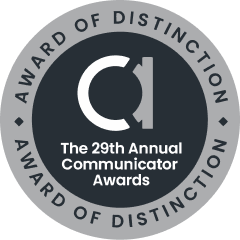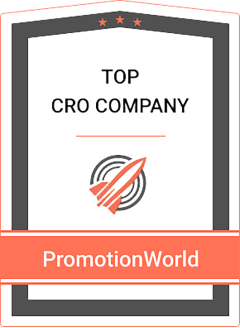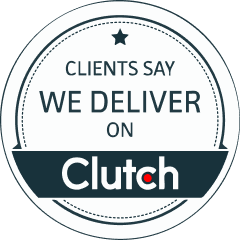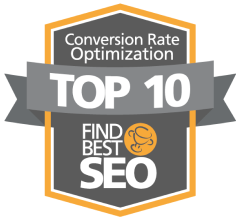Rachel James | Chief Marketing Officer | Applaud
Rachel James is the Chief Marketing Officer at Applaud, responsible for elevating the Applaud brand and creating market demand. With international experience spanning Asia, the Middle East, and Europe, she brings a global perspective to our product offering and an acute awareness of widespread market trends. Rachel has been integral to the launch and growth of start-up, scale-up, and enterprise SaaS businesses in the events, HR, and travel industry. Rachel and her team recently picked up a few awards and nominations for Applaud marketing campaigns. You can read articles and insights from Rachel on her LinkedIn page.
Transcript
[Laura]: Hi, and welcome back to the CMO’s Guide to Everything today we have with us Rachel James of Applaud Software. Rachel, how are you?
[Rachel]: Hey, I’m good. Thank you so much for having me on today.
[Laura]: Of course, of course. So let’s get started. Tell me a little bit about yourself and a little bit about Applaud.
[Rachel]: Yeah, for sure. So as you said, I’m Rachel, I’m the CMO at Applaud. We are an employee experience platform. Super interesting space to be in right now when all work is shifting, and people are at home, they’re at the beach, they’re in the office half the time, and we’re still going through that transition period. So yeah, I love it. It’s a great industry to be in right now.
[Laura]: And what do you find… Do you have any major industry verticals that you’re working in?
[Rachel]: Do you know what? So we are actually industry agnostic, and it’s the first role I’ve had where we are really truly industry agnostic because I think a lot of their people problems the organizations share are so similar. We’re really able to help with that, but of course, when it comes to messaging, when it comes to personas and things, we do like to tailor our messaging to make sure that we’re really hitting the marks and the pain points for those people that we’re trying to target.
[Laura]: Okay. Excellent. Well, the reason that you came up on my list of prospective guests for this podcast is because you guys won a pretty interesting award in the B2B Marketing Awards for Best Campaign with a Limited Budget. So, isn’t that something we’re all struggling with all the time? Very few of our clients and departments that we work in have just blank checks for us to go create really beautiful things, so this is something that everybody can relate to. Do you want to tell me a little bit about that campaign and what went into it, what that was about?
[Rachel]: Yeah, for sure. So, I’m definitely a content marketer through and through. My first ever role as CMO there was introducing content marketing, so it’s something I’ve just kept with me the whole time, and when I started at Applaud, it’s very much a startup, scale-up type business. So as you described, a challenge I think all marketers have is how do you do more with less? For me, I think the great thing about content marketing is if you get it right, you’re offering something incredibly valuable to your buyer, but it definitely has to be… that quality has to be there. You have to give them something that they’re really going to take that time out of their day to stop and read or engage with.
And as I mentioned earlier, we are in a very strange period right now when it comes to the world of work. There’s a lot of transition going on, and a priority for HR leaders and HR directors has definitely been, how do I deliver a really amazing digital employee experience for my people that maybe aren’t going to come into the office anymore or are maybe going to be at home a couple of days a week? And that’s still something that I think a lot of businesses are trying to figure out.
So what we wanted to offer as part of this campaign was an audit for people to be able to self-serve and figure out, benchmark where they were in terms of their digital employee experience, and how they were doing against their colleagues and peers. So we did a lot of the work ourselves. I have a really great team that are incredibly motivated, incredibly experienced, and really just want to get stuck in, and as much as we would’ve loved to have worked with a really big agency and got them to do all the mechanics and the technical part, we actually configured this entire audit ourselves internally. We wrote the questions, we did the research, we got the data, we did all of that internally. Created this amazing audit that people could, like I said, self-serve, and at the end, they got a personalized report that said, “Okay, this is how you’re doing. In this section, you’re doing really, really well. In this section, you need to put in a little bit of work. Here are some recommendations that are going to help you.”
And at that time when there wasn’t really anything, any guide to how to do digital employee experience in the wake of a pandemic well, that was just such a helpful tool for people. So, whilst we did have amazing paid campaigns, social campaigns, we had all the usual channels, we also just found that word of mouth, sharing, that organic sharing amongst the networks we were trying to target happened because it was just such a great tool. So as much as I would like to say there’s some secret that made this campaign amazing, I think what it was just having a really incredible piece of content that genuinely provided value to our target audience, and so they wanted to share it. They wanted to engage with it. They wanted to talk about it. And obviously, that made for a great tool for our salespeople when it came to talking to some of those prospects because they already knew what they were doing well at, what they were struggling with, et cetera.
[Laura]: That’s really great, and I think you really hit the nail on the head there when you’re like, “It created value.” So often, people get tied up in, “I want to get my product out there. These are the cool features. This is the whatever,” and so they lose sight of those other things, “You know what? I’m going to give you recommendations for free,” because that’s of value to you, and really, it’s not taking anything away from your business or your software. Just genuinely being helpful, I think, is that thing that really catapults something into that… not necessarily viral, things very rarely go viral in a B2B world, but really that widespread sharing.
[Rachel]: Yeah, exactly. Exactly. I think when you create something that people want, they actually like, and actually want to share. The same I think we do as consumers – you go to great restaurant and you want to tell everyone about it. It’s the same. I think if you find something and you’re like, “Oh, this actually provided me with a really helpful tip,” you’re going to tell your colleagues, you’re going to tell your friends that you know are struggling with the same things that you are. So that was probably the biggest takeaway for me was that it’s worth probably doing fewer campaigns that are really, really high quality, that we’ve really spent the time to make sure that they’re right and that they’re worth it than doing lots of quantity, lots of little things that don’t make that big impact.
[Laura]: Yeah. So what do you think, as you look across your background and how you’ve come in your career, what do you think has uniquely qualified you for the role that you have now or prepared you in some way?/strong>
[Rachel]: Oh, I think there are so many… I think every role that I’ve had, I’ve definitely taken something from that. As I said, my first role straight out of uni as a graduate and I learned about content marketing right from the outset, and that’s something that I still carry with me now. I still advocate for content marketing now. I was really, really fortunate in my career that I got to work in other parts of the world, other regions. I did a stint in Asia, I did a stint in the Middle East. You just learn so much from immersing yourself in another culture, I think, from learning that you can’t just take a global strategy and implement it in local markets, that there are so many nuances there that you have to be respectful of, that you have to take the time to understand. That was a big wake up call for me and I took so much from that.
I think working with different types of sales directors as well has been very interesting for me. I think I’ve worked the whole spectrum of really, really egoistical, real egomaniacs, right to the other end of the spectrum, and I’ve learned so much about how to make sure that the marketing priorities are aligned with the sales priorities, aligned with the business priorities. When I started working at Applaud, I entered as the marketing director, and I was in the role for about two years before I got promoted to CMO, and I think even that was a really, really helpful training ground for me to just really get my teeth stuck into the industry and to understand the business really well and to prep myself. So when I actually did get that promotion, I was really ready. I was hungry for it and I knew the kind of impacts that I wanted to make.
[Laura]: What an exciting journey, especially working overseas, that’s super interesting. What have you found to be perhaps the most surprising of the places that you’ve worked?
[Rachel]: The most surprising? Oh, I think probably Singapore was quite surprising to me. I didn’t really know what to expect, to be honest, but I was really excited about the opportunity. I was incredibly nervous because I was moving there on my own and I was 21 or something like that, and I was really, really nervous about it, but I found the work ethic of people in Singapore is second to none. They just work incredibly hard, and they’re so helpful and so open and so keen to help you on your journey, so I think I definitely learned a lot there about of teamwork, collaborating.
One of the big differences I found in Singapore definitely versus some of my other roles in Europe was there’s no sense there of, “Okay, well this is my job, and this is my department, and I don’t do that.” It’s very open. It’s very much like if you need help and that’s going to benefit us as a business or it’s going to help us reach our goal, then we’re all here, we’ll all help you on anything, and I thought that that was really special and it’s definitely a quality that I’ve tried to take with me and instill in my team, that we should all be constantly looking to collaborate and work together constantly.
[Laura]: So, when that comes to sales, you mentioned a little bit before about working for all kinds of sales directors, and you’re talking about that collaboration which, by the way, 110%. We have a big culture in our company with helping each other with things like that. When it comes to collaborating with sales, what would you give us, maybe some pro tips for facilitating that collaboration?
[Rachel]: Yeah. I think I was in a unique position that Applaud in that I was marketing employee number one and then our sales director was sales employee number one, and so we could really work together to create the culture that we wanted to create in this business, and again, I think that’s quite a unique position. Normally when you’re entering a role that’s already established, and you have to do your best to maybe make it better or adapt to what’s already in place, but right from the outset, I was involved in the recruiting of that role, which was really helpful, but also, we just said from the beginning, we don’t want any toxicity. We don’t want any kind of blame culture. When it comes to B2B marketing, there seems to be this classic thing of, “Marketing generated that lead, oh no, sales generated that lead,” and it doesn’t matter. It doesn’t matter who did that, as long as it’s helping to generate revenue for the business.
So, we’ve always had a very open communication style right from the start. We have really similar values. There’s zero politics, and neither of us will tolerate that, and we’re just very respectful of each other, and we always talk to each other first. If we think, “Oh, maybe that didn’t go exactly how I wanted that to go,” or, “I would’ve loved to have been involved in that conversation,” or something, that is a conversation that we have together, and we have such a great relationship because we really respect those boundaries that we’ve put in place, and then that just filters down into the rest of the team. So, I would say it’s probably the best marketing and sales relationship that I’ve worked with across any organization, and both now my team and Martin’s team are just so respectful of each other and all driving towards the same goal. I think what’s great is we’re so excited about what we’re doing that everybody just wants to constantly be keeping that momentum up and doing what they can to move the business forwards.
[Laura]: Yeah. Everybody could take notes from that. That’s a great success story. So, going back to budget a little bit, when you’re talking about B2B, particularly SaaS companies, what kind of budgeting recommendations do you have when people are looking at, how much do I spend on marketing? Where do I spend my marketing dollars? How would you provide guidance in an area like that?
[Rachel]: Yeah. So, if you are lucky enough that you’ve got a couple of years of data, that’s always obviously the best place to start, isn’t it? You have a look, in the last year or two years, what worked really well? What didn’t as well? I think owning, “I tried that, I thought it was going to be a great idea, and it wasn’t. It was a flop,” and just kind of owning that. “We’re not going to spend anything on that again this year,” but I think definitely starting with the data, starting there, looking at where you got your most cost-effective customer acquisitions or wherever you managed to generate the most volume of opportunities. I always start there and then cross-referencing that with, what are our business goals this year? Is it growing our existing customer accounts? Is there a lot of untapped potential there, or are we all about new logo this year? Do we want to focus there?
Brand awareness as well is another really, really big priority for a lot of businesses and just trying to ascertain, what are the priorities here? At the end of this year, what does success look like for us as a business? And cross referencing that against, what have my been most successful campaigns recently? And building a budget out that way. So, there is no formula, I don’t think, for, “This is what a good B2B marketing budget looks like.” It’s entirely dependent on what the business wants to do, but I think as long as you’re making data-driven decisions and you’re having those conversations with your key stakeholders, I really like to involve all of my key stakeholders in my planning processes. We go through multiple iterations and I think that’s so important when I say to them, “This is what I’m thinking of spending my money on this year, this is what I’m thinking the budget’s going to look like, these are my reasons why, how does that feel to you?” and getting that feedback from them?
So, we have that constant feedback loop, so there are no surprises throughout the year and we all enter the year on the same page, like, “Okay, this is our plan. This is what we’re going to do. We’re all behind it. Sales know what it is, sales are excited about it and they know what their role’s going to be in making that successful,” and we have that alignment and that collaboration amongst all the leaders.
[Laura]: When you go to look at your channel strategy for the year, have you found any particular channels to be just blow-it-out-of-the-water successful for you?
[Rachel]: Do you know what? The funny thing is, this is just anecdotally what I’m seeing rather than based on any industry statistics, but I’m seeing a real resurgence of the maybe more traditional marketing channels making an absolute comeback. Events this year have been incredible for us. Obviously, this is probably the first real year since the pandemic that people have felt confident and comfortable to come to these face-to-face events, but we’ve been to two this year, and they were just so incredible in terms of the energy. People are there to buy. They’ve come being like, “I want to see your solution, show it to me, sell it to me, I want to know if it’s going to work for me,” and that for me was a real shift from 2019, say, when people are more there like, “Oh, I’m just here to look, maybe don’t approach me at an event.”
So real energy shift there and also direct mail, which obviously in the past two years hasn’t really had a place with people maybe not being in offices or being at home, but people now seem to be really receptive to us sending them things, to having something physical to read and to touch. I don’t know if there is a correlation between the pandemic and people wanting to be more… I don’t know, have something more tangible in their hands to touch and feel instead of this whole digital experience all the time, but that’s been really surprising to me, actually, that I’ve seen those two channels making a comeback. It’s exciting, though. It’s really fun. I think for a marketer, they’re some really fun things to get to play with.
[Laura]: Yeah, absolutely. I have some personal anecdotes along those same lines, but let me ask you this first: any particular challenges, channels that you see maybe falling by the wayside over the next couple of years?
[Rachel]: I mean, I think something that we are really struggling with right now is probably how to make LinkedIn work for us as a channel.
[Laura]: This is my exact anecdote I was just going to say. Good, good.
[Rachel]: It feels so… I don’t know. It goes against all of my instincts because as a B2B marketer, LinkedIn should be the absolute perfect channel for us. I don’t know if it’s just that it’s so flooded with content all the time that it’s become… people are just so bombarded with sales messages there, it seems to be nearly impossible to cut through the noise. So, no, we’re really thinking about right now, how do we make LinkedIn work for us? Because I don’t think we have a formula right now, and certainly what we were doing a year ago or two years ago is not working on LinkedIn. So, it’s restrategizing there and figuring out how we make that work for us. What’s your experience with LinkedIn?
[Laura]: Well, so I look across… I’ve been doing marketing for 20 years now and as I look across that history, the industry has ebbs and flows. You have these channels that are very, very popular for a little while, and then they become difficult and we find something new or, as you say, sometimes we go back to old things like direct mail. I see LinkedIn going much the same way as email. When email marketing first became a thing, it was hugely successful. You got huge open rates, just a lot of traction, and then over the years, the effectiveness… I’m not saying that it’s not still effective, it is, but the effectiveness has died off as compared to when it was first a thing, and I think we’re seeing the same thing with LinkedIn now.
So, a few years ago, it wasn’t that crowded of a marketplace. I would actually say that LinkedIn’s advertising platform was not as robust as it is today, and so marketers weren’t using it as much as perhaps they are now, but, as you say, especially particularly over the pandemic, people live in LinkedIn a lot of times now. So, oh my gosh, there is not a day that goes by that I don’t log into my LinkedIn and have 10 messages that are completely unsolicited and 14 connection requests from people I have never met, I have no idea who they are, and they’re all trying to sell me something. So, it really devalues that experience a little bit, and so, as you say, it’s become very, very difficult to cut through the noise of LinkedIn. It’s just so crowded, and there are so many advertisers and really getting people’s attention has been a lot more difficult, which…
So, I’m in Houston and Houston is the epicenter of the oil and gas industry, and there have been some major, within the oil and gas industry, household brand names that have come out and said, “Oh, we’re pushing all of our marketing dollars to social media,” and in the back of my head, I’m going, “Really?” And six months following that announcement, they didn’t have that many ads running. They didn’t have that many. So maybe that was one of those ideas that didn’t work out as well as they thought it was going to. I don’t know.
[Rachel]: It’s so interesting, isn’t it? You’re so right. It definitely has gone that the same way as email and I think we’ll probably, as marketers, have to go through a bit another transition period where we’re like, how do we make this channel work? Because with email, we have to work so much harder, which I think is a good thing. Every email has to be really well-crafted, we have to really think, what are we putting in this? I think it might end up the the same way with LinkedIn because right now, as you said, there doesn’t really seem to be any thought that goes into some of these messages that I get. It’s just straight off the bat, “Do you want to buy my thing?” And I don’t even know what it is or why I would buy it or anything.
[Laura]: I really think there’s such a growth of communities in just our messaging system. So, you take all these Slack channels or workspaces that you can join and be a part of that are really collective groups and participating in those discussions. Now, in terms of a time standpoint, as marketers, we don’t have a lot of time for that, but if you have somebody on staff who can participate in those conversations and provide value to people, like actual value, as you say, in your campaign with your audit, providing value to people and a conversation, and then when they need something, they think of you.
[Rachel]: They’ll remember you. I think that’s the thing. It’s that leading with value rather than just putting out a big flashy neon sign to attract attention. It’s a very different skill set, very different strategy.
[Laura]: It is, and it’s more about building relationships than lots of brand name, as you say, putting out the flashing sign.
[Rachel]: Yeah, yeah, exactly.
[Laura]: What are some of the things that you’ve been asked in other interviews that you really enjoy answering or feel are of value to people?
[Rachel]: One thing that I enjoy answering, but I also love to hear from the other person, is someone said to me recently, what are best marketing books that you’ve read or podcasts you’ve listened to or whatever? Great question. Whenever I am asked that question, my mind always goes to StoryBrand, and I took a minute to reflect on that recently to think, is that still one of my top reads? Is that still one of my number one recommendations? I really think it is one of the ones that’s stood the test of time, so I would always say… I mean, I don’t know if you have any books that you can keep revisiting, keep reopening over the years that you just think stand the test of time.
[Laura]: So that’s actually always a question that I ask towards the end, but I’m a voracious reader, I read all the time, and I keep a list of books for our staff. I don’t want to make anybody read if they don’t want to read, it’s not part of their job, but there are people who enjoy that who are on our team, and so when they’re looking for a book, these are Laura’s recommendations for good reads, and that list probably is about 20 books deep at this point. But here’s something that’s super interesting is that they’re not all marketing books. Some of them are, but I really am a big believer in just, when you read other people’s commentary on things, fiction, non-fiction, whatever, it gets our creative juices flowing and your brain is working on other problems in the back of your head while you’re reading other material.
So, you can be reading something and create an idea that’s a problem that you’ve been working on for three days that is not really related to the book you’re reading at all, but just that process of exercising that other part of your brain helps you in that problem solving vein. One that’s super interesting that is on my list is AI Superpowers, and it’s about the world of AI and how it’s changing across China and the US and the big players there.
Yeah, it’s super interesting. I will post in the comments the author and the title, because I forget at this point. Another one is Brand Bewitchery, that’s another really good one that I love, and I think most recently, if you asked me what is open on my Kindle Reader at this point, I’m going to be super honest, it is the complete Hercule Poirot anthology from Agatha Christie. So I do believe in reading marketing books, I do believe in reading leadership books, but I also believe in reading everything. Just a big diversity in the type of things that you read.
[Rachel]:No, I completely agree. I think you’re so right. I obviously take a lot from marketing books and people that take the time to map out the whole timeline, I suppose, of marketing and all the different strategies related to it, but I am loving right now the Diary of a CEO podcast, which obviously has a lot of marketing components to it. You have all these great CEOs telling their stories and, more often than not, marketing is a big part of that, but it’s so interesting hearing about their journeys and, as you said, you hear them talking through problems and you’re like, “Oh, yes, actually, that really relates… I could really use that for something that I’m working on right now.” You just get newly motivated often when you just think, “I’ve been in a bit of a slump and actually, this is the kick that I needed to re-energize myself and come back with a vengeance.” So yeah, you’re so right. Diversity and having a whole mix of reading material, like I said, listening material or whatever, it’s so important.
[Laura]:Yeah, absolutely. So that’s about all I have for today, but thank you so much for joining us, and for those listening, you can go on the website and find a little bit about Applaud Software and I encourage you to go visit their website. Thank you so much, Rachel.








